Key takeaways
- Khan Academy Programming Tutorials simplify complex coding concepts through hands-on exercises and immediate feedback.
- The platform’s flexibility allows learners to progress at their own pace, enhancing understanding and confidence.
- Effective learning techniques include actively writing code, breaking problems into manageable chunks, and teaching concepts to solidify understanding.
- Tracking progress with visual metrics and real projects can boost motivation and reinforce skills learned.
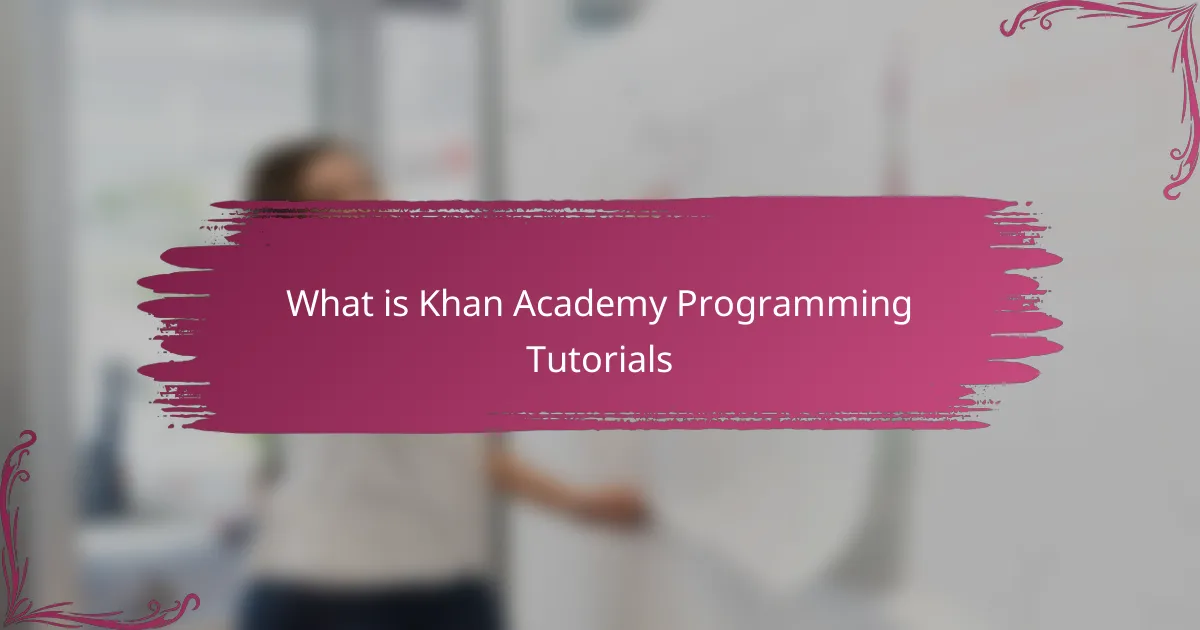
What is Khan Academy Programming Tutorials
Khan Academy Programming Tutorials are an accessible way for anyone to dive into coding, no matter their experience level. What I found remarkable is how these lessons break down complex concepts into simple, hands-on exercises. Have you ever struggled with understanding loops or functions? Khan Academy’s step-by-step approach makes those topics feel much less intimidating.
When I first explored their programming tutorials, I appreciated the mix of theory and practice. You write code directly in the browser, which instantly shows you the results. This immediate feedback loop kept me motivated—and honestly, it made learning feel like playing a game rather than tackling a chore.
The tutorials cover core programming ideas through interactive projects, often using JavaScript and ProcessingJS. I noticed how the platform’s supportive hints and community forums helped me overcome stumbling blocks without frustration. It turned the often lonely journey of learning programming into a shared experience.
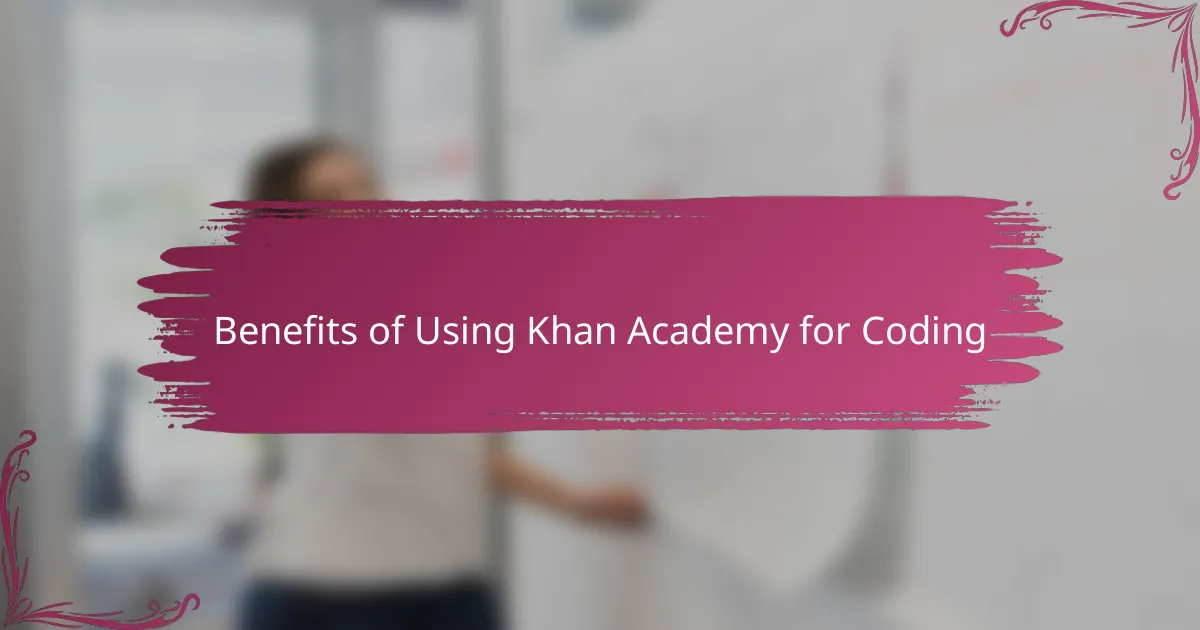
Benefits of Using Khan Academy for Coding
One of the biggest benefits I experienced with Khan Academy is the flexibility it offers. I could pause, rewind, and revisit lessons anytime, which meant I wasn’t pressured to keep up with a fixed schedule. Have you ever wished you could learn at your own pace without feeling left behind? That freedom made all the difference in my understanding and confidence.
Another thing I really enjoyed was how interactive the platform is. Writing code in the browser and seeing real-time results helped me connect the dots quickly. It’s one thing to read about coding concepts, but seeing how a few lines of code create animations or games made the learning experience genuinely exciting for me.
Lastly, the supportive community and hints built into the tutorials helped me through frustrating moments. When I got stuck, the gentle nudges and peer advice kept me from giving up. It reminded me that learning to code doesn’t have to be a solitary battle—there’s always a way forward if you look for it.
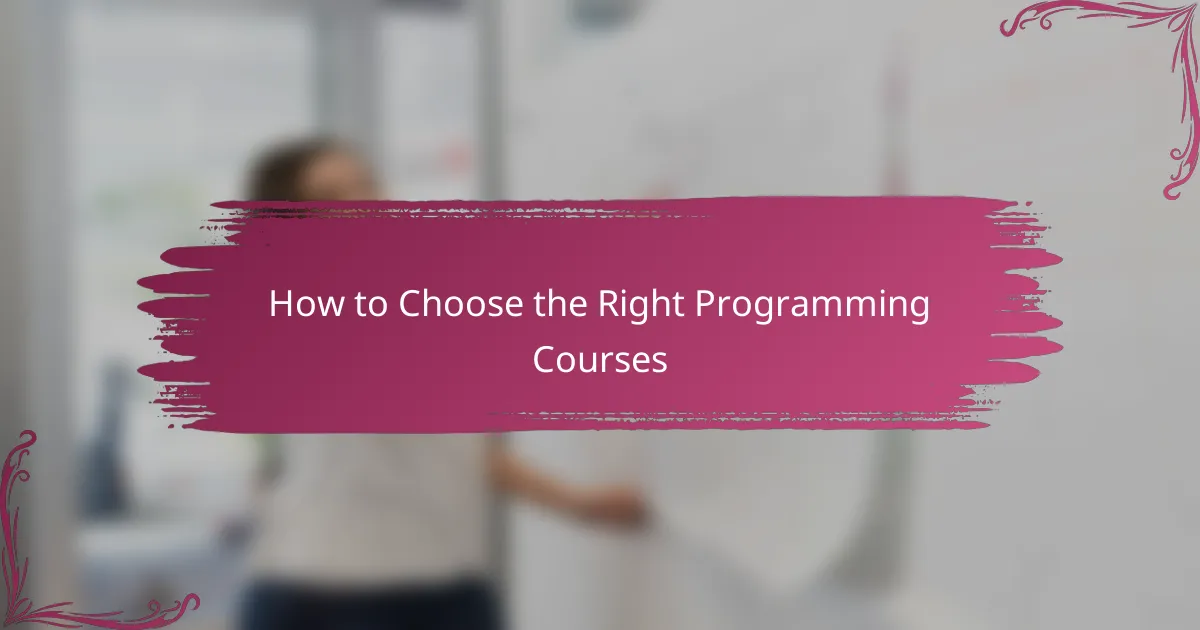
How to Choose the Right Programming Courses
Choosing the right programming course often starts with knowing what you want to achieve. I found that asking myself, “Do I want to build websites, create games, or understand the fundamentals?” helped me narrow down the options and focus on courses that aligned with my goals. It’s easy to get overwhelmed by all the choices, but having a clear purpose really guided my selection.
I also learned to pay close attention to the course structure and teaching style. Some courses are heavy on theory, while others dive straight into practical coding. For me, the mix of hands-on exercises and clear explanations was crucial—it kept me engaged and made complex ideas stick. Have you noticed how quickly your motivation drops when lessons are too dry or too fast? That balance is key.
Finally, considering the level of support available made a big difference in my progress. When I chose Khan Academy, the combination of hints, community help, and instant feedback was like having a coach right there with me. It’s comforting to know you’re not alone, especially when you hit those tricky bugs or confusing concepts. Don’t underestimate how much a helping hand can boost your confidence and keep you going.
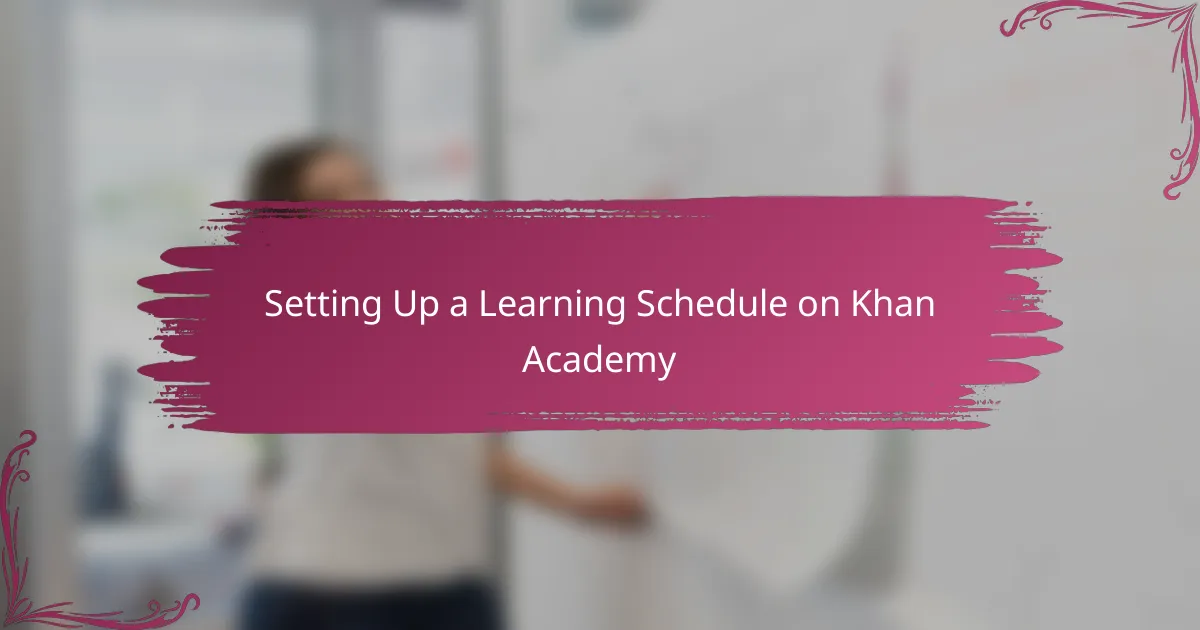
Setting Up a Learning Schedule on Khan Academy
Figuring out a learning schedule on Khan Academy was a game changer for me. I started by blocking small, consistent time slots each day—just 20 to 30 minutes—because I knew that trying to cram too much at once would only lead to burnout. Have you ever noticed how little daily habits stack up into big progress? That’s exactly what happened for me here.
What helped me stick to my plan was setting realistic goals within each session. Instead of overwhelming myself with all the tutorials at once, I focused on mastering one concept at a time. It felt rewarding to see my progress week by week, and that steady momentum kept me coming back regularly.
I also made use of Khan Academy’s built-in reminders and progress tracking features. Whenever I saw a streak or a new badge pop up, it was like a little victory that motivated me to keep going. Have you tried using those tools? For me, they turned learning from a vague task into a concrete, achievable routine.
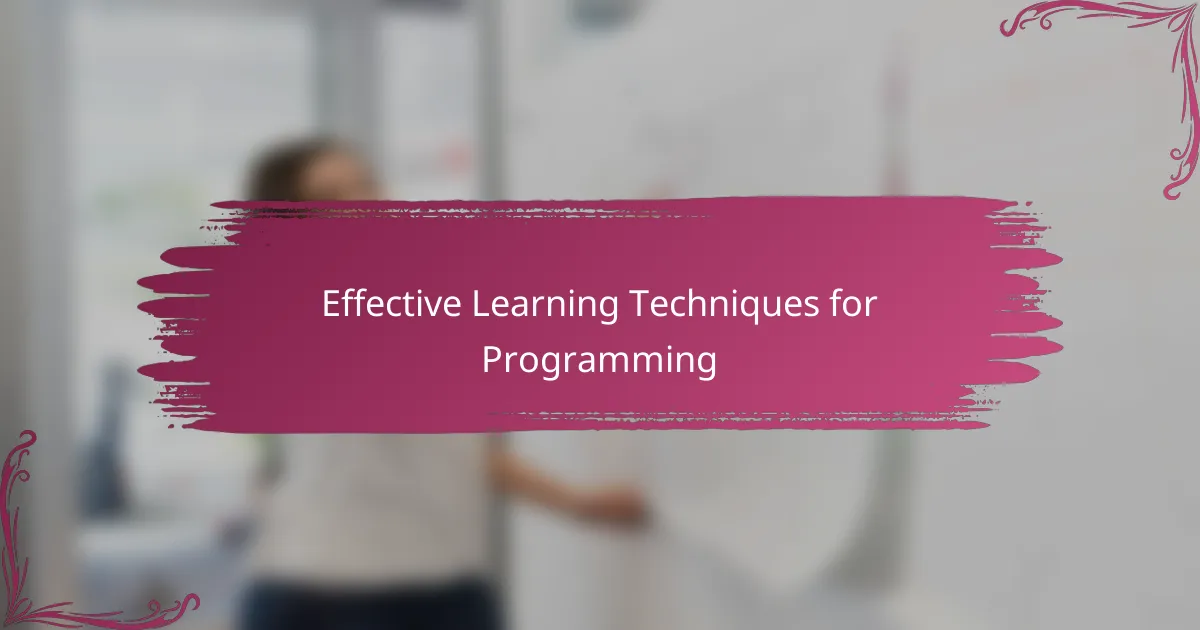
Effective Learning Techniques for Programming
When I started learning programming, I quickly realized that simply watching tutorials wasn’t enough. Actively writing code and experimenting through small projects made a huge difference in how well I absorbed the material. Have you ever noticed how typing out code yourself helps you remember concepts better than just reading or listening? That hands-on approach kept me engaged and allowed me to understand debugging as a natural part of learning.
Another technique that worked wonders for me was breaking down complex problems into smaller, manageable chunks. Instead of trying to grasp an entire algorithm at once, I’d focus on understanding one step at a time. It might sound basic, but this kind of incremental learning saved me from feeling overwhelmed and kept my confidence strong—because every small win felt like progress.
I also found that teaching what I’d learned either by explaining it aloud or writing about it clarified things in my mind. Have you tried talking through a tricky concept as if you were teaching it? That mental exercise highlighted gaps in my knowledge and pushed me to revisit confusing parts until they made sense. From my experience, this reflection phase is just as important as coding itself for truly effective learning.
![]()
Tracking Progress with Khan Academy Tools
One thing that really stood out to me about Khan Academy’s progress tracking tools is how they made my learning feel tangible. Seeing my skill badges accumulate and my energy points rise gave me a real sense of achievement. Have you ever felt stuck wondering if you’re actually improving? Those visual markers helped me push through doubts and celebrate small wins.
I also relied heavily on the exercise completion trackers. They pinpointed exactly where I paused or stumbled, which made it easier for me to revisit tricky topics without wasting time. It’s like having a personal coach nudging you back on course—something I found incredibly motivating when my focus wavered.
What I appreciated most was the ability to review detailed progress reports anytime. Being able to check which concepts I’d mastered and which needed more work kept me honest with myself. If you’re anything like me, seeing progress on paper—or screen—turns abstract learning into a clear, manageable journey.
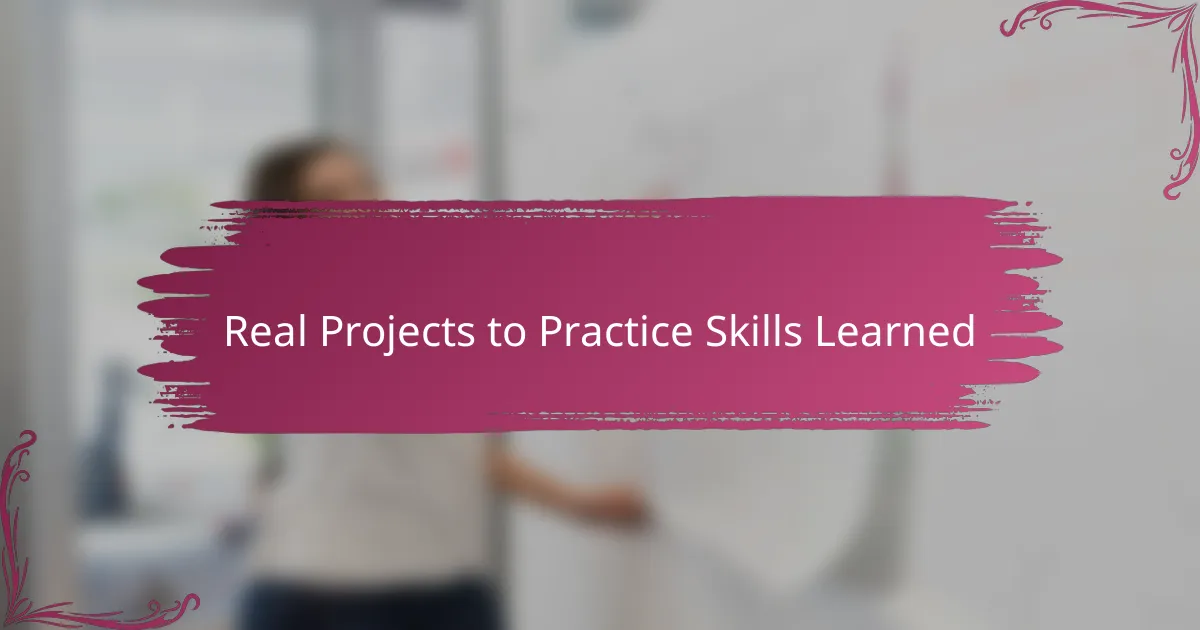
Real Projects to Practice Skills Learned
One of the best ways I cemented what I’d learned on Khan Academy was by diving into real projects. Instead of just running through exercises, I challenged myself to build small games and interactive graphics right in the browser. Have you ever noticed how creating something tangible instantly boosts your confidence? For me, actually seeing a game I coded come to life made all those lessons feel worthwhile.
I remember the first time I tried making a simple animation after completing a tutorial. It was messy at first—bugs everywhere—but each fix taught me something new. That trial-and-error process felt frustrating sometimes, but also incredibly rewarding. It’s funny how tackling a real project makes abstract concepts suddenly click, doesn’t it?
What really helped was picking projects that matched what I’d just learned. For example, after mastering loops, I set myself the goal of animating a bouncing ball using those loops. That immediate application reinforced the skill better than any quiz or explanation ever could. Have you ever tried applying lessons right away? From my experience, that’s where true understanding begins.